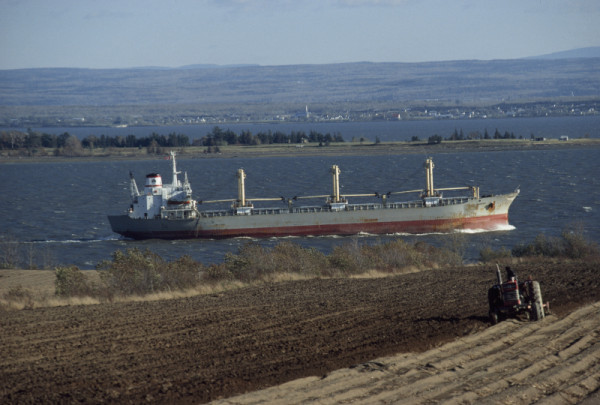Touching Down with Plan 2014 in Quebec
After 10 years of scientific research, public consultation, and outreach the International Joint Commission has created Plan 2014 – a new management plan for Lake Ontario-St. Lawrence River. It is a balanced approach that aims to restore a long degraded environment while accounting for the needs of boaters, property owners, the shipping industry and other users. To understand how the plan will impact local communities I spoke with Virginia Elliott, who lives on the island of Montreal, about why this plan is so important for her region.
Virginia Elliott at her last Great Canadian Shoreline Cleanup (C) Virginia Elliott
Virginia, you are a site coordinator for the Great Canadian Shoreline Cleanup. That is a lot of work! Why do you do it?
I participated in a couple of cleanups, and as a member of Scouts Canada I recognized that this was a perfect project for youth members to undertake as part of the program we lead. As Area Commissioner for Stoney Point, (downtown Montreal, west to Lachine) I organize activities for the groups in the area. Getting out and participating in a cleanup of the shoreline is an excellent community service activity and a chance for both youth and adults to witness first hand the ecosystem of our waterways and the impact human activity has on it. Educating and sensitizing Scout members to this is very rewarding. By educating youth in environmental responsibility, we are trying to leave a legacy for the future that will ensure a clean water system.
Tell us about your favourite part of Lake Ontario/St. Lawrence River.
The section of the St Lawrence that borders LaSalle, a borough of Montreal, is my favourite. It includes many parks, green spaces and bike paths. It is very accessible and provides a natural habitat in the middle of the city and the opportunity for city dwellers to engage in several activities such as birdwatching, fishing, boating, surfing, cycling, and hiking. There are also historic sites related to the development of the area that have retained some of their original surroundings, emphasizing the important role the river has played throughout our history.
The Great Canadian Shoreline Cleanup and Plan 2014 are both about ensuring the health of the aquatic environment. Why is the future health of Lake Ontario and the St. Lawrence so important to you and the people and communities of the region?
Having a clean, viable waterway is essential to a healthy environment for both people and animals. As cities become larger and the countryside more remote it is vital that natural habitats close to urban centres be managed in a strategic way. The Great Lakes and St Lawrence River is one of the greatest drainage systems in the world. Millions of people and animals depend on the water for survival. We must actively engage in keeping this ecosystem healthy for all. There is also an economic role as fishing and leisure are only ensured if the waters of the lakes and rivers are clean.

The environmental benefits of the International Joint Commission’s new approach to managing water levels and flows are well documented. What will Plan 2014 and a restored aquatic environment mean for you?
We have seen the effects human intervention has had on Lake Ontario and the St. Lawrence River, so we need to learn from past experiences. Working towards a clean water system will ensure the future of our cities and the lifestyle we lead. It will also ensure the survival of our natural resources that are so important to us all. We Canadians pride ourselves in our beautiful natural surroundings. We need to take an active role in maintaining and protecting them.
Help restore Lake Ontario and the St. Lawrence River today by showing your support for Plan 2014 today: visit wwf.ca/plan2014 to learn more.


